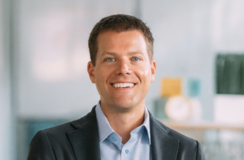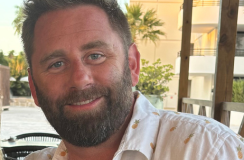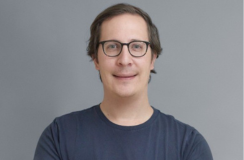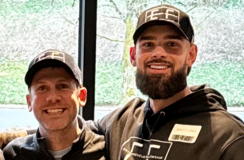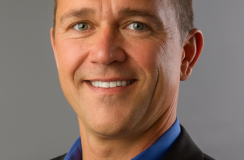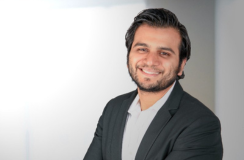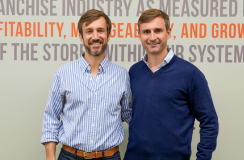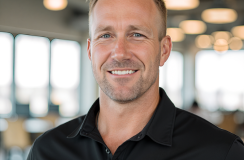fter a traditional search fund spanning 18 months, Mark Sinatra and his business partner acquired an HR outsourcing firm in 2008. Mark then spent the next 10 years growing the business, which was not without its challenges.
Acquiring the business during the 2008 recession was “not ideal.” While the company didn’t have to deal with a significant number of clients going out of business, there were some who leveraged the recession to renegotiate rates.
Other challenges involved bringing in too many new initiatives too quickly for a smaller sized company, and dealing with resistance from customers when upgrading to a new platform.
However, by the time Mark sold the business to a private equity firm in 2017, he had taken the company from $18M to $50M in revenue. He says about 80% of the growth was organic.
“At the end of the day, the most critical thing in the early days of a transaction is really to establish that trust and that relationship with that seller.”
For the past few years, Mark has been investing in other searchers. He is also now running Aspen HR, another HR outsourcing firm.
In this episode, Mark discusses figuring out how to run a traditional search, what drew him to the HR outsourcing industry, how the industry and searches have changed since 2008, and implementing too much change too quickly. He also explains the problem with waiting too long to bring a deal to your investors and what he looks for now as a search fund investor.
Check out:
✳️ Top takeaways from the episode
✳️ Episode highlights with timestamps
Acquisition Entrepreneur: Mark Sinatra
💵 What he acquired: After acquiring HR outsourcing company Staff One as the target of a traditional search fund in 2008, Mark Sinatra spent the next decade tripling the company’s size before selling the business to a private equity firm. Since then, Mark has been investing in search funds himself through ETA Equity. Mark has had a front row seat to the evolution and growth of the search fund world over the last 15 years.
💡 Key quote: “That's really one of the biggest challenges of the search, is you're putting forth all of this effort into a binary outcome. You buy a business or you don't buy a business, and now if you're putting forth all this effort, and you're working tirelessly to do it, and you're 18 months in and you still haven't achieved that outcome, how do you know if you're being successful or not?”
👋 Where to find him: LinkedIn

Acquisition Tips From the Episode
Top takeaways from this conversation
💪A big challenge with traditional search funds? Motivation.
One of the biggest challenges of traditional search funds is that there’s only one of two possibilities: you buy a business or you don’t. All of the time and energy that is poured into the search comes down to this binary outcome.
After working tirelessly on your search, you can find yourself 18 months into it without having bought a business, which makes it incredibly difficult to get a sense of whether you’re making progress. You know (or hope) you’ll send the letter of intent one day and be able to move forward, but until then it’s difficult to gauge whether your search is going well or not.
“That is the biggest challenge of the process: really to keep yourself mentally engaged and optimistic into achieving the ultimate goal.”
🕑 Take time when considering changes.
From the outset, Mark wanted to convert the business into a growth platform and instituted some extensive changes with its technology, sales, and people.
Looking back, he believes he was too quick when executing some of these changes and could have been more intentional about when to make them, and what changes to make — or not make.
There isn’t an infinite capacity for a lower middle market company to absorb different changes and initiatives, so it’s important to be strategic in deciding where to spend your resources so you don’t overburden them with too many initiatives at one time.
It can be easy to forget how fragile some smaller companies are, Mark says.
“If you've got a company that has 25 employees, 10 employees, even 50 employees, there's just only so much those companies can really handle adequately at once.”
🧑🏼 Appreciate the human element of the deal.
Despite all the tools that can increase efficiency during a search, Mark believes it’s important to remember that you are buying a business from another human being, and that person has likely never sold a business before.
That is why it’s absolutely critical to establish strong trust and rapport early on in the acquisition process.
In Mark’s experience, the searchers that have done well with their acquisitions have been able to keep that lesson at the forefront as they’ve come across deals.
“I feel like the searcher over time through those at bats, gets to appreciate the human element of the acquisition process. And as a result, learns that, hey, one of the ways I'm going to set myself apart here is the fact that, no, I'm not just buying the business, but I'm the succession plan for this seller, and really, really homes in on that factor.”
Episode Highlights
Inflection points from the show
[2:24] Perfect fit: After hearing about search funds following his first year of business school, Mark was instantly drawn to the model and felt his skillset matched the path of entrepreneurship through acquisition (ETA).
[5:41] Learning as they go: While conducting a traditional search, Mark and his partner didn’t have a structured way of tasking their interns to help. They learned via trial and error.
[9:27] The challenge of the search: Doing a traditional search fund is time consuming and doesn’t always result in buying a business. It can be difficult to stay engaged and optimistic throughout the process.
[10:35] Appeal of HR outsourcing: After an 18 month search, Mark and his partner acquired Staff One, an HR outsourcing firm. Mark discusses why the industry appealed to him and how it’s changed.
[14:29] Difficulty to scale: There’s been a lot of consolidation in the HR outsourcing industry, and Mark explains how the barriers to entry are moderate, but the “barriers to thrive” are high.
[17:19] The path to $50M: While it wasn’t a linear path, Staff One saw a lot of growth. During the nine years Mark ran the business, net revenue went from $18M to $50M.
[18:47] The challenges of scaling: With the benefit of hindsight, Mark believes he moved too quickly to execute on some of the changes they implemented at Staff One. In hindsight, he realizes they could have been more intentional about changes and when they made them.
[22:54] Acquiring a business during a recession: When Mark acquired Staff One, the economy was in the midst of a deep recession. Fortunately many of his clients stayed in business, but they used the recession as a pretext to renegotiate prices. Mark discusses why it was worth keeping some clients at a smaller margin.
[24:38] Comfort in the familiar: When they implemented necessary changes to the technology platform, some clients were unhappy because they were familiar with the old system. That resistance is something to be aware of when making changes.
[27:46] The human element: When you’re buying a business, it’s important to keep in mind that the seller is a human being, and developing a strong relationship with the seller is critical.
[30:28] Involve investors: A key lesson is not spending too much time on a deal that isn’t going to happen (easier said than done). Mark cautions that in some cases, investors won’t like an aspect of a deal, which is why a searcher shouldn’t wait too long before bringing them the deal. If the potential investors are out, the deal won’t happen.
[33:41] Investor criteria: Mark outlines some of the criteria he looks for now as a search fund investor.
Links & Mentions
✅ AspenHR




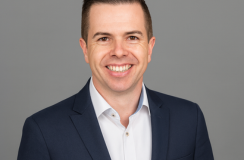


%20-%20thumbnail.png)

.png)




%20-%20thumbnail.png)


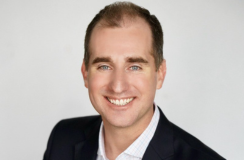






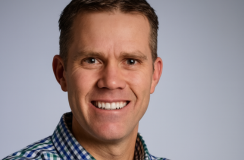

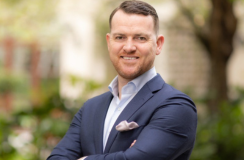



%20-%20thumbnail.png)


